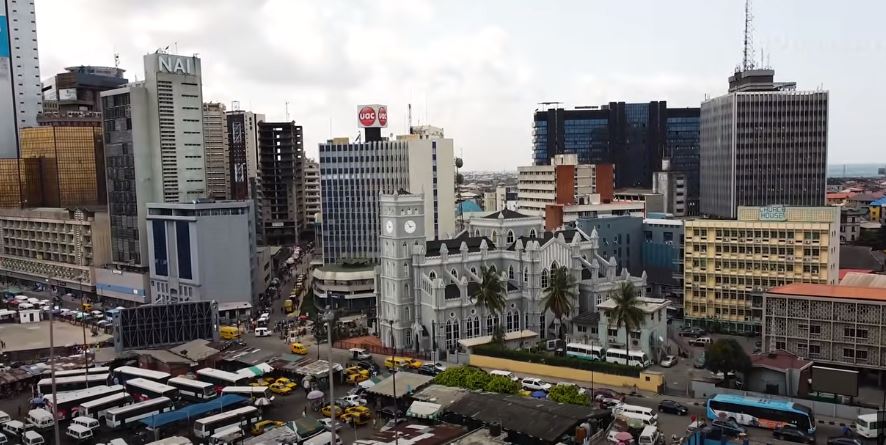Welcome to Niger State, one of Nigeria’s most diverse and captivating regions! The State is also known as the “Power House” of the Nation or the power State. The State is famous for its three Hydro-Electric Dams which are, the Shiroro Hydro-Electric Dam, the Kainji Hydro-Electric Dam, and the Jebba Hydro-Electric Dam, which is how it earned the name “Power House” of the nation.
If you’re looking for adventure, history, and stunning natural beauty, you’ve come to the correct location. Niger State is home to some of the country’s most incredible tourist attractions, from its breathtaking waterfalls, Dams that power the nation to historical sites that tell the stories of our past; this State has something for you.
Whether you’re a local looking for a weekend getaway or a traveler exploring Nigeria, these top 10 tourist attractions in Niger State are sure to leave you in awe.
Let’s dive in!
Top 10 Tourist Attractions in Niger State
Below are some of the popular & prominent tourist attractions in Niger State:
1. Gurara Waterfalls
Gurara Waterfalls is one of the most beautiful natural wonders in Niger State. Located about 30 kilometers from Minna, the capital of Niger State, this waterfall is a sight to behold. The falls tumble from a height of about 30 meters, creating a mesmerizing spectacle as the water crashes into the pool below. The surrounding area is lush and green, making it a perfect spot for picnics and relaxation.
The Gurara Waterfalls is not just about beauty; it also has historical significance. The waterfall is named after the Gurara River, which has been a religious symbol for the local communities for generations. It’s a popular spot for tourists and locals, especially during the rainy season when the falls are most impressive.
During the dry months, particularly from January to March, the water levels drop, revealing clear pools at the base of the falls where visitors can swim and cool off. This unique feature makes Gurara Waterfalls one of the top tourist attractions in Niger State and Nigeria, appealing to adventure seekers and those looking for a peaceful escape.
2. Zuma Rock
Zuma Rock is often called the “Gateway to Abuja” because of its prominent location along the Abuja-Kaduna Expressway. Standing tall at about 725 meters, this massive rock formation is an iconic symbol of Niger State. The rock is not just a pretty face; it has a fascinating, unique shape that resembles a human face when viewed from certain angles.
Zuma Rock holds cultural significance for the Ggbagyi people, who believe it is sacred because it protected them during the inter-tribal wars. The rock is so famous that it is featured on the Nigerian N100 (Naira) Note/Bill.
It’s an excellent spot for hiking and taking pictures, and the view from the top is breathtaking, if you can get to the top. If you’re in the area, make sure to stop by and snap a picture of this natural wonder!
3. Bina Footprint
The Bina Footprint, also known locally as Dauda Woyaba, is in the village of Bina, near the Muye area, not very far from Lapai; this unique site shows a footprint on a rock at the top of a hill. The footprint is believed to be that of a man named Dabo, who is said to have left his mark during his travels.
According to local folklore, Dabo was on his way to perform ablution for prayers when he stepped on the rock, leaving behind this remarkable imprint.
The Bina Footprint holds historical importance for the local community, as it is associated with Dabo’s journey and his contributions to the area, including the construction of a mosque before he migrated to Kano. This connection to the past makes the footprint a point of interest for locals and tourists alike.
4. Kainji National Park
Kainji National Park is a large natural park known for its diverse landscapes like woodlands, riverside forests, and the large Kainji Lake. There are several wildlife in the park, such as elephants, lions, and antelopes, despite issues like overgrazing and poaching.
The park’s foundation was a crucial step in Nigeria’s conservation efforts, marking the beginning of its initiative to safeguard wildlife and the environment. It’s particularly vital for protecting endangered species like the lion. The spot is a great area to watch animals live freely in their natural habitat.
Despite facing operational suspensions in 2021 due to security concerns, a partnership initiated in October 2023 between the park authorities and the West African Conservation Network aims to improve conservation and security.
5. Kainji Dam
Kainji Dam is a significant hydroelectric dam located on the Niger River in Niger State, Nigeria. Completed in 1968, it is one of the largest dams in West Africa. It is crucial in the country’s power generation and water management systems.
The Kainji Dam is equipped with a hydroelectric power station that initially had a generating capacity of 960 megawatts. However, only eight of the planned twelve turbines were installed, resulting in a current capacity of about 760 megawatts. This facility provides electricity to major cities across Nigeria and even sells some power to neighboring countries.
The creation of Kainji Lake has transformed the local environment, providing opportunities for fishing and irrigation, which are vital for the surrounding communities. However, this transformation has also led to environmental challenges, including overfishing and the displacement of the locals.
A tour of the dam and the views of the dam and its reservoir make it a great spot for a day out with family or friends.
6. Baro Town (Baro Empire Hill and Baro Port)
Baro Town is a historically rich settlement located in Niger State along the banks of the Niger River. This small but significant town is known for its historical landmarks, including the Baro Empire Hill and the Baro Port, which have played vital roles in the region’s transportation and trade.
Baro Port is an inland water port, historically linking river transport with the railway system. It was established during the colonial era, the port was a key point for the export of agricultural products from Northern Nigeria, including cotton and grains. The port’s strategic location made it an essential hub for trade, facilitating the movement of goods between the river and the railway. Although the Baro-Kano railway line, completed in 1911, is no longer in use, Baro Port remains a symbol of the town’s historical significance.
On the other hand, Baro Empire Hill offers stunning views of the surrounding landscape. It serves as a reminder of the town’s historical importance. The hill is often associated with local fables. It provides an excellent spot for visitors to appreciate the area’s natural beauty.
The history of Baro Town dates back to its establishment as a settlement of the Nupe people. The name “Baro” is derived from the Nupe word “Gbaro,” meaning “standing.” The town gained prominence during the colonial period when the British selected it as a crucial link for rail and river transport. Lord Lugard, the first Governor-General of Nigeria, recognized Baro’s potential and established it as a critical point for trade and transportation.
7. Lord Lugard Colonial Ruins at Zungeru
The Lord Lugard Colonial Ruins in Zungeru are remnants of the colonial era, showcasing the architectural style of the time. The ruins include old buildings and structures that tell the story of British colonial rule in Nigeria.
Lord Lugard, the first Governor-General of Nigeria, established Zungeru as a significant administrative center. Zungeru was the first capital of Nigeria during the colonial era until 1916 when it was moved to Kaduna State. It was at this place that Lord Lugard gave the speech that facilitated the amalgamation of Southern and Northern Nigeria.
The ruins are remnants of the colonial buildings where Lord Lugard lived and worked. Although much of the original structure has deteriorated over time, visitors can still see the foundations and some columns hinting at the past’s grandeur. The area also includes a cemetery with graves of early colonial aides and settlers, adding to the site’s historical significance.
8. Rijiyar Nagwamatse (Nagwamatse Well)
Rijiyar Nagwamatse, also known as Nagwamatse Well, is a historical site in Minna. This ancient well has been a vital water source for the local community for generations. It is unique not only for its historical significance but also for its purpose to the people of the community.
A fascinating legend surrounds the well. It’s said that the founder of the Kontagora Emirate, Umaru Nagwamatse, performed a miracle at this spot. While resting under a tree, he scratched the earth with his finger; miraculously, water gushed. This event led to the creation of the well, which has been a vital water source for the community ever since.
Rijiyar Nagwamatse (Nagwamatse Well) is a remarkable site that embodies the history and culture of Niger State. With its deep roots in the community and its ongoing significance as a water source, the well is a must-visit for anyone exploring the region.
9. Mayanka Falls, Suleja
Mayanka Falls, located near Suleja, is another stunning waterfall that attracts visitors with its beauty. The falls are surrounded by lush vegetation, providing a peaceful environment for relaxation and picnics.
“Mayanka” translates to “Place of Execution,” adding intrigue to this beautiful site. Historically, Mayanka Falls was a location where executions were carried out, particularly for those sentenced to death.
Despite its historical connotations, Mayanka Falls is a hidden gem that remains relatively unknown to many. The area is characterized by lush greenery and a peaceful atmosphere, making it an ideal spot for picnics, relaxation, and nature walks.
The falls are a popular spot for locals, especially during the rainy season when the water flow is at its peak. The area around Mayanka Falls is also known for its rich biodiversity, making it an excellent location for nature lovers. Whether you’re looking to take a refreshing dip or enjoy the scenery, Mayanka Falls is a delightful escape from city life’s hustle and bustle.
10. Shiroro Dam
Shiroro Dam is another impressive dam located on the Niger River, about 40 kilometers from Minna. It is primarily used for hydroelectric power generation and is known for its scenic views and recreational activities.
Constructed in the 1990s, Shiroro Dam is crucial in providing electricity to the region. The dam’s reservoir is a popular spot for fishing and boating, attracting visitors looking to enjoy these activities.
The combination of engineering and natural beauty makes Shiroro Dam a must-visit destination for tourist attractions in Niger State.
Wrapping Up
There is a lot of tourist attractions in Niger State which makes it a place of beauty, history, and culture. From the stunning Gurara Waterfalls to the historical ruins of Zungeru, each destination offers a unique experience that is sure to leave a lasting impression.
Generally, Niger State is safe for tourists, but it’s always wise to stay updated on local news and follow travel advisories. Check out the tourist attractions in Abuja if you’d like to explore the nations capital.




